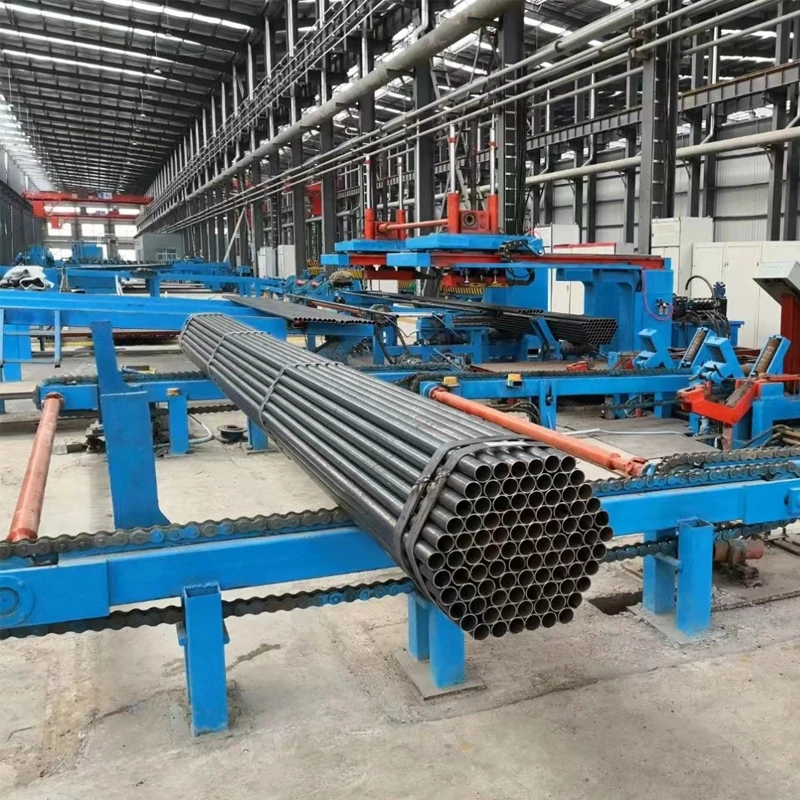Understanding the Benefits and Applications of Butt Fusion Equipment for Pipe Joining
Butt Fusion Equipment An Overview
Butt fusion is a widely used method for joining thermoplastic materials, primarily in the construction and installation of pipelines. This technique provides a solid and durable connection that is integral to many applications, including water distribution, gas supply, and wastewater management. At the core of this process lies butt fusion equipment, which plays a crucial role in ensuring the quality, strength, and reliability of the joints produced. In this article, we will explore how butt fusion works, the types of equipment involved, and the advantages of using this method in various industries.
How Butt Fusion Works
Butt fusion is a thermoplastic welding process that involves the heating and joining of two pipe ends together. The process begins with the preparation of the pipe ends, which are usually made of polyethylene (PE) or polypropylene (PP). The surfaces are trimmed to create a flat, clean edge to ensure a proper fit. Next, the ends of the pipe are heated using a heated plate, usually referred to as the heater or fusion plate. The temperature set on the heater must be carefully controlled to melt the plastic without damaging it.
Once the surfaces of the pipes have melted sufficiently, the heater is removed, and the two pipe ends are brought together under controlled pressure. This step is critical as it creates a bond as the molten material fuses to form a homogeneous joint. The joint is then allowed to cool, which solidifies the material and forms a strong connection.
Types of Butt Fusion Equipment
There are several key pieces of equipment involved in the butt fusion process. Each plays a specific role in achieving optimal results.
1. Fusion Machine This is the primary equipment used during the butt fusion process. Fusion machines come in various sizes and configurations, designed to accommodate different pipe diameters and materials. They are equipped with clamps to hold the pipes in place, ensuring alignment during the fusion process.
2. Heater Plate The heater plate is essential for melting the pipe ends before joining them. Most modern fusion machines come with a built-in heater plate that adjusts temperatures to specific material requirements. Precision in temperature control is vital to avoid overheating or underheating the plastic.
3. Clamping System A robust clamping system is critical for holding the pipes in proper alignment during heating and fusion. The clamps must apply consistent pressure to ensure a strong joint and prevent any movement during the process.
4. Cooling System After the fusion process, cooling the joint is necessary to achieve a solid bond. Some machines come equipped with a controlled cooling system that ensures the joint cools evenly and efficiently.
butt fusion equipment

5. Electronics and Control Systems Many modern butt fusion machines are equipped with advanced electronic systems that monitor temperatures, pressures, and fusion times. These systems enhance precision, repeatability, and overall reliability.
Advantages of Butt Fusion
Butt fusion offers several advantages over other joining methods, making it a popular choice in various industrial applications
- Strength and Durability Butt fusion creates a joint that is as strong as the pipe material itself, ensuring long-lasting performance. This is particularly important for high-pressure applications.
- Cost-Effectiveness The simplicity of the butt fusion process often results in reduced labor costs and shorter installation times compared to other methods, such as mechanical fittings or welding.
- Leak-Free Connections The seamless nature of butt fusion results in leak-free joints, an essential factor in fluid transport applications.
- Versatility Butt fusion equipment can be used for different sizes and types of thermoplastic materials, providing flexibility for various projects.
- Improved Flow The smooth interior of a butt-fused joint minimizes resistance to flow, enhancing the efficiency of the pipeline.
Conclusion
Butt fusion equipment is an essential part of many industries that rely on thermoplastic piping systems. By understanding the processes and tools involved, professionals can ensure that they achieve the best possible results in terms of quality, reliability, and cost-effectiveness. As industries continue to evolve and seek more efficient ways to manage their infrastructure, the demand for butt fusion and its associated equipment will likely grow, solidifying its place as a cornerstone in pipeline construction and maintenance.
-
High Frequency Straight Seam Welded Pipe Production Line-BzZhou Xinghua Machinery Equipment Manufacturing Co., LTD.|line pipe steel&welded gas pipeNewsJul.30,2025
-
High Frequency Straight Seam Welded Pipe Production Line-BzZhou Xinghua Machinery Equipment Manufacturing Co., LTD.|High Precision&Automated SolutionsNewsJul.30,2025
-
High Frequency Straight Seam Welded Pipe Production Line - BzZhou Xinghua Machinery Equipment Manufacturing Co., Ltd.NewsJul.30,2025
-
High Frequency Straight Seam Welded Pipe Production Line-BzZhou Xinghua Machinery Equipment Manufacturing Co., LTD.|Precision Welding, High EfficiencyNewsJul.30,2025
-
High Frequency Straight Seam Welded Pipe Production Line|BzZhou Xinghua|Precision Welding&EfficiencyNewsJul.30,2025
-
High Frequency Straight Seam Welded Pipe Production Line - BzZhou Xinghua|Precision Engineering&EfficiencyNewsJul.30,2025


